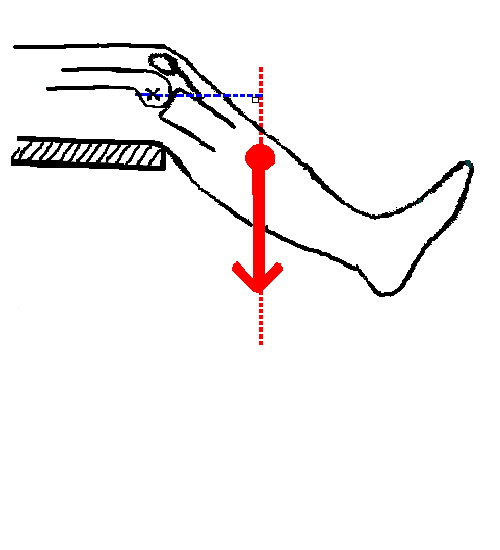- A moment is a turning effect, produced by a force at some distance from an axis of rotation:
M=Fs Therefore, a moment's magnitude depends on:
- F, the force applied,
- measured in Newtons (N) or pounds (lb)
- depicted as a vector with a line of application
- s, the force's moment arm
- measured in centimeters (cm) or inches (in)
- the perpendicular distance FROM the force's line of application TO the axis of rotation

Accordingly, a moment is measured in units like Newton*meters (or Newton*centimeters) or inch*pounds.
We typically hyphenate these units; we use the * symbol here as a reminder that we derive these units as the product of two basic measurements.
- F, the force applied,
- Just as a FORCE produces straight line (linear) acceleration in an object at rest.
F=ma a MOMENT produces an angular acceleration in an object (like a body part) around an axis of rotation (like a joint axis).
M=Ir where I is the moment of inertia and r is the angular acceleration.
Links to further study
Students in PHTH/OCTH 7143 begin the study of human movement by considering moments produced by gravity and by muscles. However, any force that acts at a distance from a joint produces a moment at that joint. In the future, we'll consider:
- ground reaction moments
- joint moments
Reference:
Lieber, R.L., & Bodine-Fowler, S.C. (1993). Skeletal muscle mechanics:
Implications for rehabilitation. Physical Therapy, 73, 844-856.
Last updated 1-17-01 ©Dave Thompson PT
return to PHTH/OCTH 7143 lecture schedule
- ground reaction moments
- joint moments
Reference: